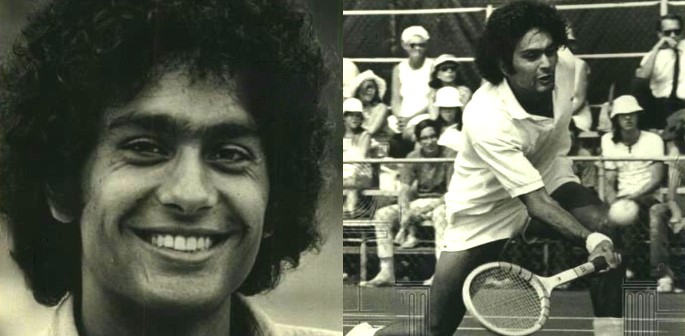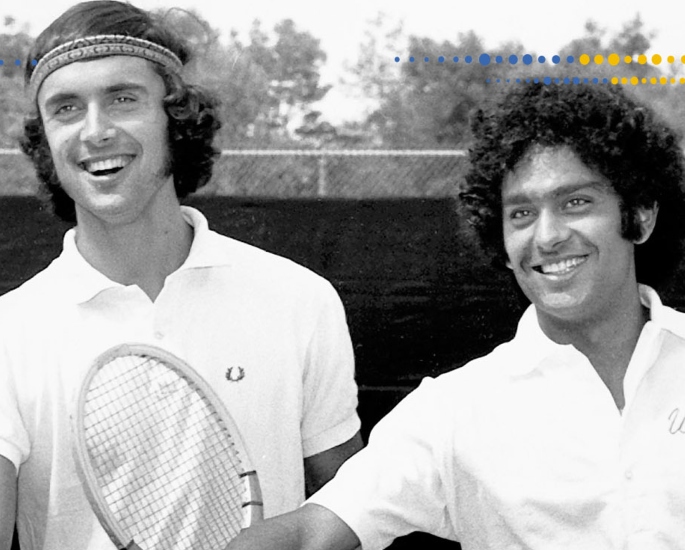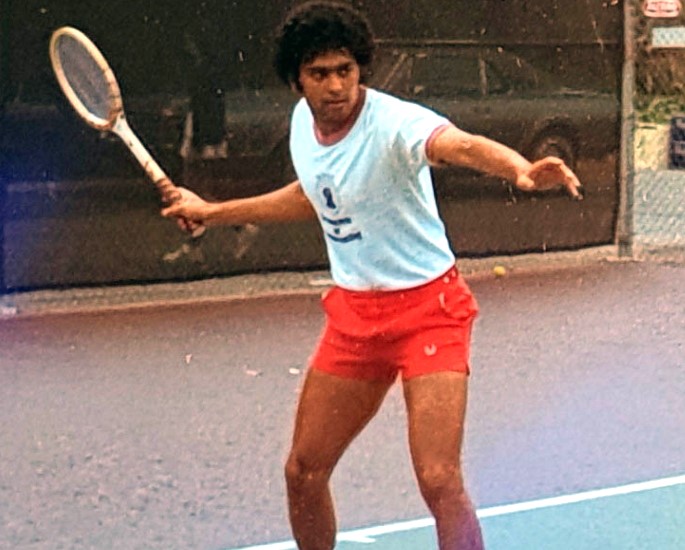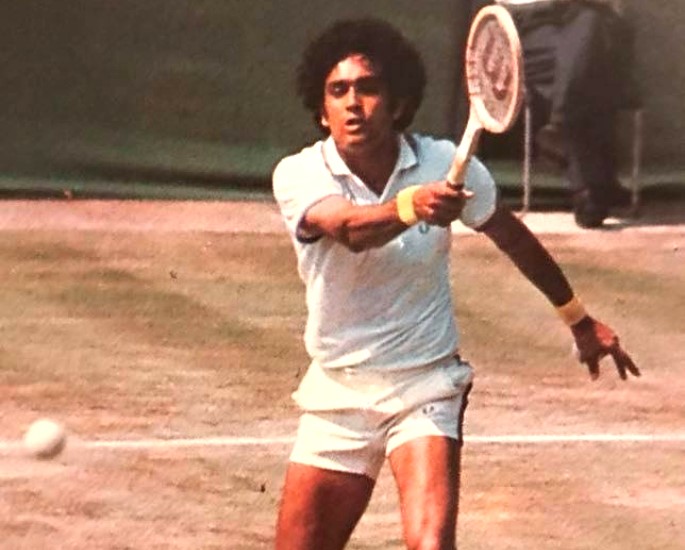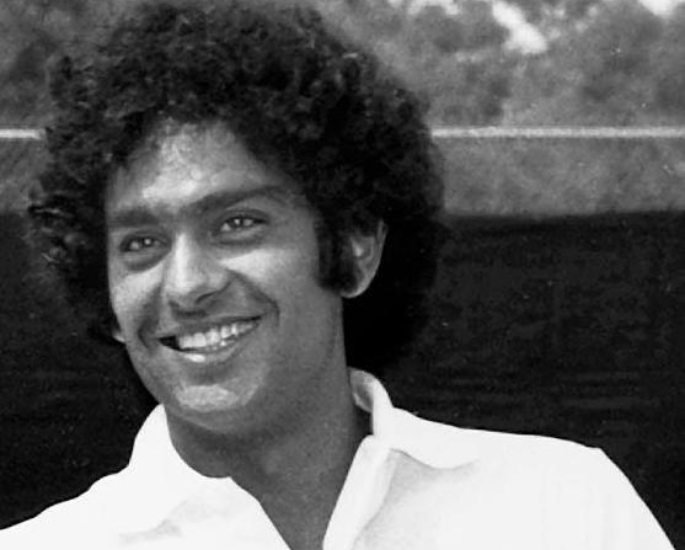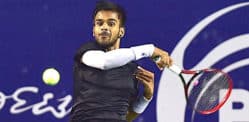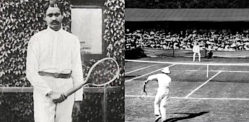He would clinch two ATP titles in the same year
Haroon Rahim, a name synonymous with Pakistani tennis excellence, embodies both triumph and enigma in the world of sports.
As a distinguished tennis player from Pakistan, Haroon’s journey is full of remarkable achievements, historic success, and baffling mystery.
Born in Lahore in 1949, Haroon received early encouragement to pursue tennis within the confines of his home.
Influenced by his own family and the prospect of sporting greatness, Haroon became a legend for Pakistani tennis.
Subsequent players have emerged and gone on to tremendous heights, but it was Haroon Rahim who laid the foundations for Pakistani players to do well.
In a sport clouded by white players, some of whom are pioneers of the sport, South Asian tennis players have been few and far between.
Although, more Indian players than any other South Asian group, have gone on to make a slight name for themselves, appearing at and winning multiple Grand Slam Tournaments.
Therefore, it shows Haroon had to fight even harder to grace the famous green court.
Early Influences and National Prominence
There’s no doubt that Haroon Rahim was heavily influenced by his father, Mir Abdul Rahim.
Mir Abdul was a dedicated civil servant and avid tennis enthusiast, who fostered a competitive spirit among all his children, urging them to excel in the sport.
This passion ignited a similar fervour in his son, who started playing tennis at a young age under his father’s guidance.
It was also Haroon’s siblings that impacted his ambitions and playing style.
Notably, his elder brother, Naeem Rahim, was a National Champion and reached the semifinals at Junior Wimbledon in 1956.
Haroon himself made a significant impact by reaching the quarterfinals at Junior Wimbledon twice, in 1965 and 1967, showcasing the family’s stance on the court.
With a solid foundation laid by his family, Haroon swiftly rose to prominence in the Pakistani tennis scene.
His talent and dedication propelled him to become a National Champion at the tender age of 15, setting a record that still stands today.
Haroon’s early successes marked the beginning of a remarkable tennis career that would captivate audiences worldwide.
The Ascent to the Top
Remarkably, Haroon embarked on his professional career while still in his teens, making his debut in the main rounds of Grand Slam tournaments in 1968.
At just 15 years old, Haroon Rahim made history as the youngest tennis player ever to represent Pakistan in the Davis Cup.
On the back of this significant milestone, Haroon was granted a prestigious tennis scholarship to UCLA, one of America’s top universities.
Under the watch of renowned coach Glenn Bassett, Haroon’s abilities flourished.
He played a pivotal role in leading UCLA to consecutive NCAA titles in 1970 and 1971.
Notably, his teammate in 1971 was none other than Jimmy Connors, who would later become a multiple US Open and Wimbledon winner.
Furthermore, Haroon secured the NCAA doubles title in 1971 alongside Jeff Borowiak.
His skill set was evident as he reached the semifinals in the highly competitive collegiate championships.
This early success underscored his prodigious talent and marked the beginning of a remarkable journey in the world of professional tennis.
ATP Rankings and Grand Slam Performances
Haroon Rahim’s ascent to national prominence was marked by his exceptional talent and dedication to the sport.
His remarkable achievements captivated the imagination of tennis enthusiasts across Pakistan, especially during the Wimbledon championships of his era.
Haroon’s historic appearance in the main rounds of Wimbledon in 1976, breaking a decades-long drought for Pakistani tennis, sparked a renewed interest in the sport within the country.
Furthermore, he would clinch two ATP titles in the same year.
The initial victory came in Little Rock against former Wimbledon runner-up Alex Metreveli from the Soviet Union.
His second triumph occurred in Cleveland against Colin Dibley.
This was a massive feat after Haroon suffered a loss in 1972 to the Spanish US Open winner, Manuel Orantes.
To come back from such a setback was refreshing and surprising for many tennis fans.
Haroon would also reach the ATP final in 1977 but lost out to successful American player, Sandy Mayer.
Additionally, Rahim reached the final but was defeated by Manuel Orantes, the Spanish US Open winner and French Open finalist.
However, the titles wouldn’t stop there. In doubles, Haroon was equally successful.
He secured three titles: Oslo in 1974 partnering with Karl Meiler, North Conway in 1975 with Erik Van Dillen, and Little Rock in 1977 with Colin Dibley.
In his double team at Grand Slam events, Rahim reached the quarterfinals of the US Open in men’s doubles (1971), the second round of the French Open (1972), and the third round of Wimbledon (1976).
In 1977, Haroon Rahim was ranked 34th in the world. This remains the highest position achieved for any Pakistani tennis player.
In an era which was birthing tennis icons, Haroon was right there amongst it, playing in global arenas and trying to diversify the sport.
To highlight this even further, the only Pakistani player to reach the Wimbledon stage since Haroon Rahim is Aisam-ul-Haq.
His breakthrough prompted retrospection on the achievements of past Pakistani tennis players.
Despite the passage of time, Haroon’s impact on the sport remains unparalleled.
His pioneering achievements and victories on both the singles and doubles circuits aren’t spoken of enough.
Personal Life and Disappearance
Despite his professional success, Haroon Rahim faced personal challenges that ultimately led to his mysterious disappearance from the tennis world.
His marriage to an American woman marked a turning point in his life, triggering personal turmoil and estrangement from his family and country.
Following his marriage, Rahim’s life took a dramatic turn as he severed ties with his family, quit tennis at the age of 29, and vanished without a trace.
The circumstances surrounding his disappearance sparked speculation and rumours, with theories ranging from involvement in a cult to personal crises and unresolved family issues.
Decades after his disappearance, the mystery of Haroon’s whereabouts continues to intrigue and perplex tennis enthusiasts worldwide.
But, his legacy extends far beyond some conspiracies about his location.
Some claim that Aisam-ul-Haq Qureshi is the most successful Pakistani tennis player, having been the only Pakistani to reach a Grand Slam final.
Whilst this achievement was historic, his lack of single career titles is disappointing. Additionally, his highest-ever ranking has been 125th in the world.
If we were to discuss his doubles career titles, it would be a different story.
But, one cannot shy away from the doors Haroon Rahim opened.
Haroon’s bravery to excel in a sport which didn’t offer platforms for South Asian players at the time and to play so well that he had to be heard is awe-inspiring.
Mixing that with his incredible triumphs, he has left a lasting impact on the history of Pakistan sport.
Likewise, the global tennis community should reflect on his career and journey to make sure future budding players can follow in his footsteps.



















































